Tampa Museum of Art Has a Full Season of Love-Themed Exhibitions
- TAMPA, Florida
- /
- October 02, 2018
The Tampa Museum of Art has an exciting slate of exhibitions for Fall 2018 focused on the theme of love. Sponsored by the Vinik Family Foundation, the Season of Love began August 16 with the unveiling of Patricia Cronin’s commissioned sculpture Aphrodite Reimagined, part of her solo exhibition Patricia Cronin, Aphrodite, and the Lure of Antiquity: Conversations with the Collection.
Winner of a Rome Prize in Visual Art in 2006-2007, and past Trustee of the American Academy in Rome, Cronin is deeply interested in the ancient world, which she frequently references in her work. For the first commission in Tampa's biennial series, Cronin has created a large outdoor sculpture of Aphrodite inspired by a fragmentary 1st-century AD marble torso of Aphrodite in the museum’s collection. Entitled Aphrodite Reimagined, Cronin’s sculpture re-envisions the museum’s Aphrodite fragment as a monumental “complete” sculpture with a stone torso and translucent head, arms, and legs. The sculpture invites viewers to reconsider the narrative of an ancient work heavily restored after its rediscovery, and acts as a metaphor for shifting certainties about human history. Cronin and museum curators will also pair an Etruscan cinerary urn from the Museum’s collection with multiple iterations of Cronin’s 2002 sculpture Memorial to a Marriage, a powerful artwork that references ancient and neoclassical funerary monuments as well as contemporary issues of social justice. The final gallery of the exhibition comprises a visual dialogue between figural works by Cronin and several antiquities from the museum’s permanent collection.
Season of Love continues with two additional special exhibitions. On loan from the collection of the Vinik Family Foundation, Yayoi Kusama’s LOVE IS CALLING, one of the artist’s celebrated Infinity Rooms, opened in late September and is on view to Feb. 14, 2019.
An immersive, experiential work of art, LOVE IS CALLING invites visitors to enter a mirrored room with tentacle-like soft sculptures hanging from the ceiling and positioned on the floor. These forms glow with changing colors and feature Kusama’s signature polka dots. Mirrored walls create a kaleidoscopic effect, with the reflected imagery of the tentacles seemingly extending into infinite space. Visitors hear audio of the artist reciting a love poem in Japanese as they walk throughout the installation.
Yayoi Kusama (Japanese, b. 1929) is one of today’s most recognized and celebrated artists. In addition to her widely popular Infinity Rooms, such as LOVE IS CALLING, Kusama creates vibrant paintings, works on paper, and sculpture with abstract imagery. Her artwork has been shown and collected by leading institutions across the globe and she is considered “the world’s most popular artist.” A comprehensive retrospective, organized by the Hirshhorn Museum and Sculpture Garden in Washington, DC, is currently travelling around the US and Canada. In October 2017, the Yayoi Kusama Museum opened in Tokyo.
Finally, in October, a retrospective of Robert Indiana’s sculpture (Oct. 25, 2018, to March 17, 2019) will feature never-before-exhibited examples of the artist’s iconic artwork LOVE.
This exhibition is organized by the Albright-Knox Art Gallery, Buffalo, NY.
On the occasion of the American artist Robert Indiana’s ninetieth birthday and in recognition of his broad and enduring achievement in sculptural media, the Albright-Knox Art Gallery mounted Robert Indiana: A Sculpture Retrospective in Summer 2018. The exhibition travels to Tampa, the only other venue.
Having gained international prominence in the early 1960s, Indiana (born Robert Clark in 1928) has created some of the world’s most immediately recognizable works of art. Filled with intensely personal combinations of universal symbols—words and numbers, stars and wheels—his sculptures, paintings, drawings, and prints are most readily associated with the Pop art movement. Indiana’s work in sculpture offers a unique opportunity to consider the multiple paradoxes inherent in his practice of creating objects of significance and permanence from everyday impressions and materials.
Many of Indiana’s sculpture have never been publicly exhibited in the United States, and some of the most extraordinary examples of his career-defining LOVE sculpture, one of the twentieth century’s most iconic works of art, have never been shown anywhere. Robert Indiana: A Sculpture Retrospective offers a thorough reassessment of the artist’s work in sculpture, from his earliest assemblages of the late 1950s to his most recent series of remarkable painted bronzes.

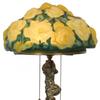
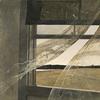

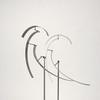

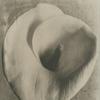







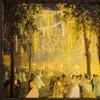
![Offering a Truce [Bested], 1895, is estimated to sell for between $1,300,000 and $1,800,000 on March 22, 2014, for The Russell: An Exhibition and Sale to Benefit the C.M. Russell Museum. Offering a Truce [Bested], 1895, is estimated to sell for between $1,300,000 and $1,800,000 on March 22, 2014, for The Russell: An Exhibition and Sale to Benefit the C.M. Russell Museum.](/images/c/a8/20/Dec10_Offering_a_Truce__Bested_300dpi100x100_c.jpg)